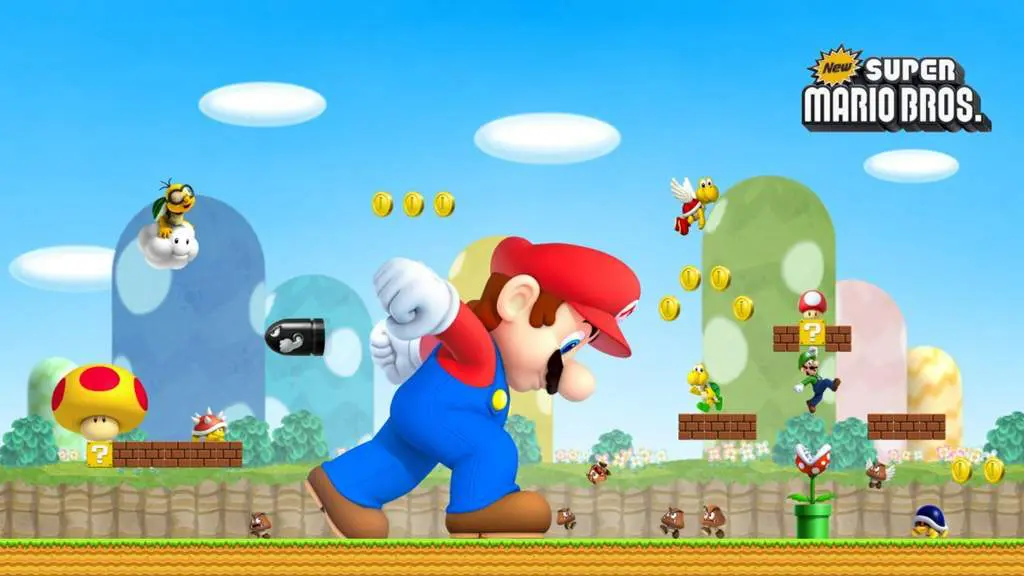History of Mario Bros

An Italian plumber created by a Japanese artist somehow became one of the most recognizable characters on earth. Featured in over 100 games, it’s hard to imagine Nintendo or even video games without this moustached man in red. But where did he come from?
Our story begins in the early 1980’s with a struggling card and toy company – Nintendo – trying to break into a then-expanding market – arcade games. The company’s few attempts at making games were mixed at best, and a game called Radar Scope barely sold at all – leaving Nintendo with empty cabinets in need of a new game.
Looking to try something new, Nintendo President Hiroshi Yamauchi approached an artist named Shigeru Miyamoto – who until then worked on art for Nintendo’s games – and asked him to design a game for the cabinets. Miyamoto was not a programmer, and thought of a story before starting work on gameplay – perhaps the first time this has happened in the history of video games
1981: Donkey Kong


The ultimate result was Donkey Kong, a love triangle between a man, his pet gorilla and his girlfriend.
The game, while probably not the first platformer, defined the platform genre with its main character: “Jump Man”. He could move left and right, climb ladders and jump – over obstacles or from one platform to the next. It was very different from major video games of the time.
So different, in fact, that when the game arrived at Nintendo’s American headquarters near Seattle, WA, the team didn’t really like it and though it wouldn’t catch on. They were wrong, of course: the game was a huge success.
1983: Mario Bros
Two years later Miyamoto, after working on a variety of games including two sequels to Donkey Kong, designed a two-play arcade game featuring Mario. The game, set in a the myriad of pipes beneath New York City, is the first to feature Mario’s brother, Luigi. It’s also the first game in which Mario cannot die by falling, the first of many super-human powers he would eventually acquire.
1985: Super Mario Brothers


You know this game. You’ve played this game. To this day its music is probably the most recognizable of any video game ever, and the first level was many people’s introduction to console gaming itself.
Looking at the Mario games that preceded this one, it’s not hard to understand what made Super Mario Bros the best selling video game of all time.
There are 24 levels, each of them far larger than all of the spaces that made up Donkey Kong and Mario Bros combined. There are powerups. Mario can grow bigger with a mushroom and shoot fireballs with a flower. And there is the now-standard left-to-right side scrolling that defined platformers for a decade, and still defines many today.
1988: Super Mario 3


Fans disappointed with Super Mario Bros 2 had no cause to worry – Super Mario Bros 3 featured controls similar to the original game. That’s not to say it was a copy. No, Super Mario Bros 3 was the first Mario game to feature a world map and inventory. It also added several new powerups.
The gameplay was non-linear, to an extent: some levels could be skipped if the player wanted, depending on the map layout. This game is considered by many (including this reporter) to be one of the greatest games of all time.
1990: Super Mario World
In 1990 Nintendo put out a new console, and also released the biggest Mario game yet – Super Mario World. This game introduced Yoshi, Mario’s beloved dinosaur friend, and for the first time included levels with multiple solutions.
It was a great showcase for what the Super Nintendo was capable of, yes, but it was also a great game in and of itself. It was also the last major console sidescroller to star Mario until New Super Mario Bros Wii came along in 2009 nearly 20 years later.
1995: Super Mario 64
The next generation of consoles called for a different sort of Mario game altogether, and Super Mario 64 delivered. This game was 3D, and that meant one thing – exploration. Unlike previous Mario games, largely a finish-the-level affair, Super Mario 64 offered many different tasks inside each level:
The game set the standards for the 3D era of platforming, both in terms of camera management and objectives.
Super Mario Galaxy, released 12 years later, is very similar to Super Mario 64 in many ways.





